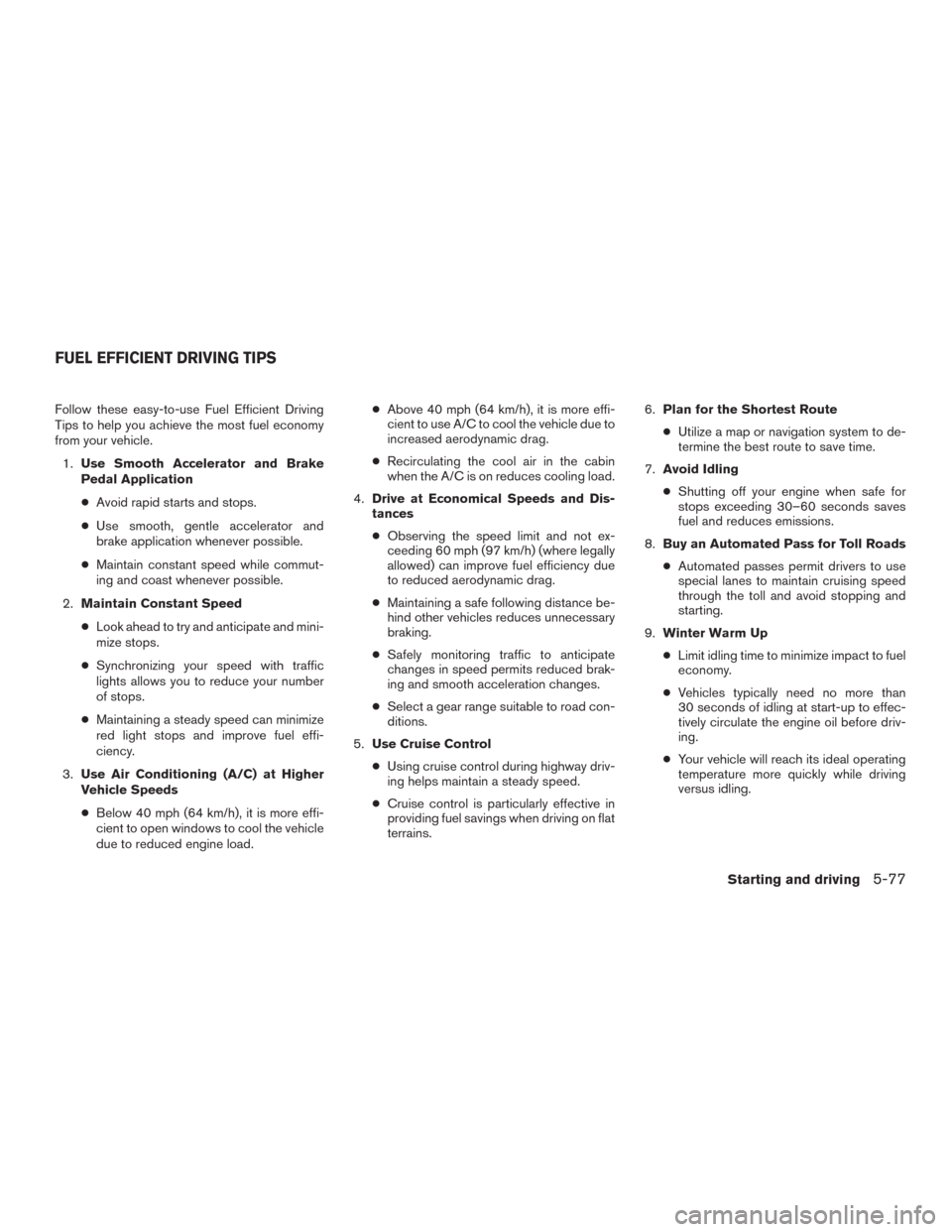Page 16 of 465
14. Heater and air conditioning controls
(P. 4-26)
15. Shift lever (P. 5-16)
16. Push-button ignition switch (P. 5-11)
17. Cruise control switches (if so
equipped) (P. 5-39)
Intelligent Cruise Control (ICC)
switches (if so equipped) (P. 5-41)
18. Driver supplemental knee air bag
(P. 1-47)
19. Bluetooth® Hands-Free Phone
System/Audio control switches
(P. 4-29)
20. Hood release (P. 3-21)
Fuel door release (P. 3-27)
Powered rear seatback switch (P. 1-2)
21. Fuse box (P. 8-22)
22. Liftgate opener switch (if so equipped)
(P. 3-22)
Heated steering wheel switch
(if so equipped) (P. 2-40)
Vehicle Dynamic Control (VDC) OFF
switch (P. 2-40)
23. Instrument brightness control (P. 2-32)
Twin trip odometer reset switch (P. 2-4)
*: Refer to the separate Navigation System Own-
er’s Manual (if so equipped) .Refer to the page number indicated in pa-
rentheses for operating details.
Illustrated table of contents0-7
Page 92 of 465
14. Heater and air conditioning controls
(P. 4-26)
15. Shift lever (P. 5-16)
16. Push-button ignition switch (P. 5-11)
17. Cruise control switches (if so
equipped) (P. 5-39)
Intelligent Cruise Control (ICC)
switches (if so equipped) (P. 5-41)
18. Driver supplemental knee air bag
(P. 1-47)
19. Bluetooth® Hands-Free Phone
System/Audio control switches
(P. 4-29)
20. Hood release (P. 3-21)
Fuel door release (P. 3-27)
Powered rear seatback switch (P. 1-2)
21. Fuse box (P. 8-22)
22. Liftgate opener switch (if so equipped)
(P. 3-22)
Heated steering wheel switch
(if so equipped) (P. 2-40)
Vehicle Dynamic Control (VDC) OFF
switch (P. 2-40)
23. Instrument brightness control (P. 2-32)
Twin trip odometer reset switch (P. 2-4)
*: Refer to the separate Navigation System Own-
er’s Manual (if so equipped) .Refer to the page number indicated in pa-
rentheses for operating details.
Instruments and controls2-3
Page 332 of 465

Follow these easy-to-use Fuel Efficient Driving
Tips to help you achieve the most fuel economy
from your vehicle.
1.Use Smooth Accelerator and Brake
Pedal Application
●Avoid rapid starts and stops.
●Use smooth, gentle accelerator and
brake application whenever possible.
●Maintain constant speed while commut-
ing and coast whenever possible.
2.Maintain Constant Speed
●Look ahead to try and anticipate and mini-
mize stops.
●Synchronizing your speed with traffic
lights allows you to reduce your number
of stops.
●Maintaining a steady speed can minimize
red light stops and improve fuel effi-
ciency.
3.Use Air Conditioning (A/C) at Higher
Vehicle Speeds
●Below 40 mph (64 km/h), it is more effi-
cient to open windows to cool the vehicle
due to reduced engine load.●Above 40 mph (64 km/h), it is more effi-
cient to use A/C to cool the vehicle due to
increased aerodynamic drag.
●Recirculating the cool air in the cabin
when the A/C is on reduces cooling load.
4.Drive at Economical Speeds and Dis-
tances
●Observing the speed limit and not ex-
ceeding 60 mph (97 km/h) (where legally
allowed) can improve fuel efficiency due
to reduced aerodynamic drag.
●Maintaining a safe following distance be-
hind other vehicles reduces unnecessary
braking.
●Safely monitoring traffic to anticipate
changes in speed permits reduced brak-
ing and smooth acceleration changes.
●Select a gear range suitable to road con-
ditions.
5.Use Cruise Control
●Using cruise control during highway driv-
ing helps maintain a steady speed.
●Cruise control is particularly effective in
providing fuel savings when driving on flat
terrains.6.Plan for the Shortest Route
●Utilize a map or navigation system to de-
termine the best route to save time.
7.Avoid Idling
●Shutting off your engine when safe for
stops exceeding 30–60 seconds saves
fuel and reduces emissions.
8.Buy an Automated Pass for Toll Roads
●Automated passes permit drivers to use
special lanes to maintain cruising speed
through the toll and avoid stopping and
starting.
9.Winter Warm Up
●Limit idling time to minimize impact to fuel
economy.
●Vehicles typically need no more than
30 seconds of idling at start-up to effec-
tively circulate the engine oil before driv-
ing.
●Your vehicle will reach its ideal operating
temperature more quickly while driving
versus idling.
FUEL EFFICIENT DRIVING TIPS
Starting and driving5-77
Page 414 of 465

Fluid types Capacity (Approximate) Recommended Fluids and Lubricants
US measure Imp measure Liter
Power steering fluid — — —• Genuine NISSAN E-PSF or equivalent.
• Use of power steering fluid other than Genuine NISSAN E-PSF will pre-
vent the power steering system from operating properly.
• Refill to the proper level according to the instructions in the “Maintenance
and do-it-yourself” section of this manual.
• It is recommended you visit a NISSAN dealer for service.
Brake fluid — — —• Genuine NISSAN Super Heavy Duty Brake Fluid or equivalent DOT 3.
• Available in mainland USA through a NISSAN dealer.
• Refill to the proper level according to the instructions in the “Maintenance
and do-it-yourself” section of this manual.
• It is recommended you visit a NISSAN dealer for service.
Multi-purpose grease — — —• NLGI No. 2 (Lithium Soap base) .
• It is recommended you visit a NISSAN dealer for service.
Windshield-washer fluid 1-1/4 gal 1 gal 4.6 L• Refill to the proper level according to the instructions in the “Maintenance
and do-it-yourself” section of this manual.
• Genuine NISSAN Windshield Washer Concentrate Cleaner & Antifreeze
or equivalent.
Air conditioning system refrigerant — — —• HFC-134a (R-134a) .
• For additional information, refer to “Air conditioner system refrigerant and
oil recommendations” in this section.
• It is recommended you visit a NISSAN dealer for service.
Air conditioning system oil — — —• NISSAN A/C System Oil Type ND-OIL8 or equivalent.
• For additional information, refer to “Air conditioner system refrigerant and
oil recommendations” in this section.
• It is recommended you visit a NISSAN dealer for service.
Technical and consumer information9-3